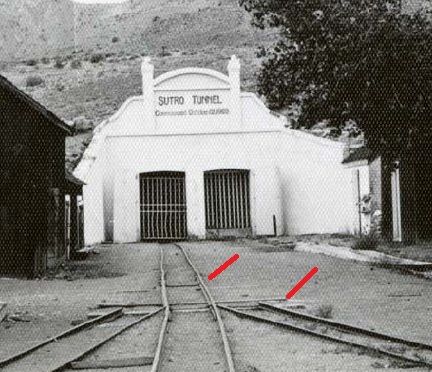I ran across this photo of the entrance to Sutro Tunnel (Dayton, NV), which I was able to visit last October. The track was mainly for hauling out dirt and hauling in men & timbers & etc. during the tunnel’s construction, and maintaining the tunnel after that.
The track switch caught my eye, and I can’t see how it worked. A 3-way stub of course, and it looks like the moving rails slid on some boards. I could easily be wrong, but the thing seems too short to bend the rails. Further back, there might be a pivot plate for the rails. But if so, how was that joint made? Can’t picture moving a loaded cart with the rails, like that vector-plate thing (I forget what those were called).

Any thoughts on how this worked?
Cliff




